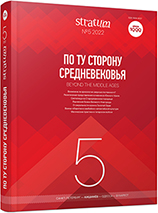Культово религиозные представления средневековых кочевников Южного Урала (на материалах погребального комплекса Уелги)
Cult and Religious Concepts among the Medieval Nomads of the Southern Urals (Based on the Materials of the Uelga Burial Complex)
Author(s): Sergey G. BotalovSubject(s): History, Archaeology, Ethnohistory, Middle Ages
Published by: Издательский дом Stratum, Университет «Высшая антропологическая школа»
Keywords: South Ural; nomads; Manichaeism; the Tree of Life; paired birds;
Summary/Abstract: In the High Middle Ages in the multicultural environment of the nomads of the Ural-Kazakhstan steppes the necessity was maturing for entry into the area of a mono-religious spiritual space. Manichaeism, which appeared in Central Asia as the state religion of the Uyghur Khaganate, subsequently spread widely to the west among the Altai, East Kazakhstan and South Ural nomadic communities. This is indicated by vivid pictorial images (Nestorian — Christian cruciform plaques, scenes of Buddhist-Christian images and paired birds of the Tree of Life), which have become widespread in silver or polymetallic headset toreutics. This is clearly seen in the materials of the Uelgi burial complex. The reason for this process was not only in the indirect western expansion of the Uyghur Khaganate and a little later the Kyrgyz Khaganate, but in the unusual popularity of Manichaeism. It was the universal religion closest to the pagan Ugric-Tengrian pantheism. Consequently, it is no coincidence that the symbolism and involved images in visual practice include peculiar markers of Zoroastrianism, Christianity, Buddhism, and Manichaeism itself.
Journal: Stratum plus. Археология и культурная антропология
- Issue Year: 2022
- Issue No: 5
- Page Range: 45-64
- Page Count: 20
- Language: Russian
- Content File-PDF

